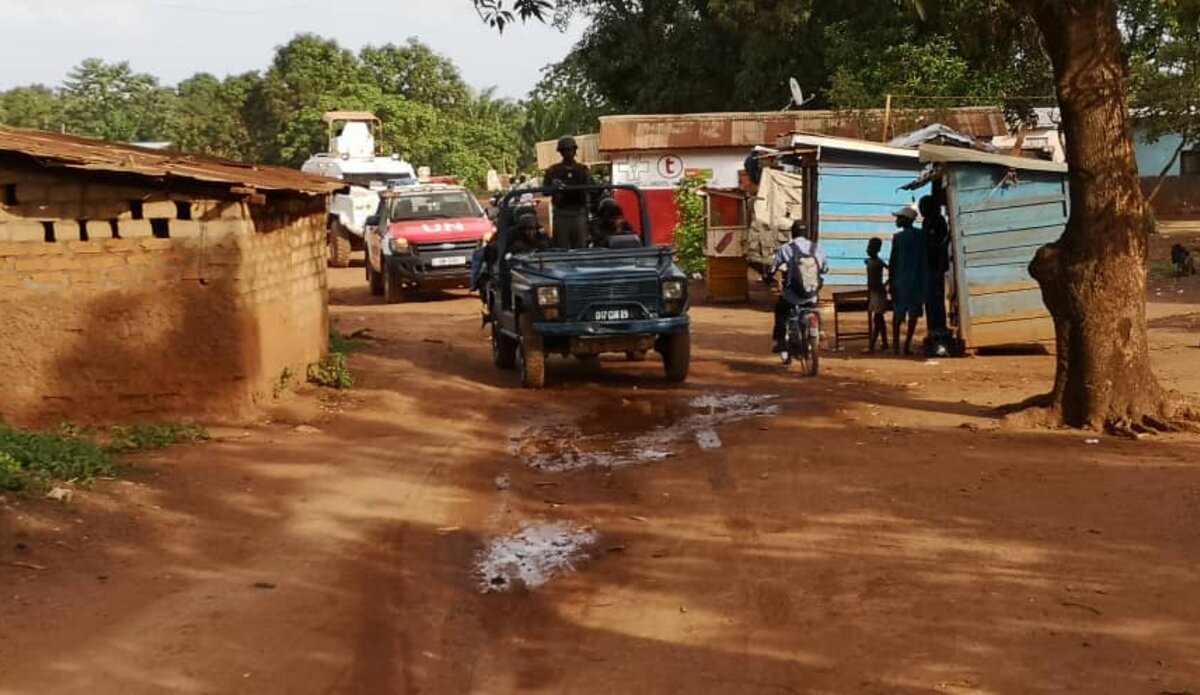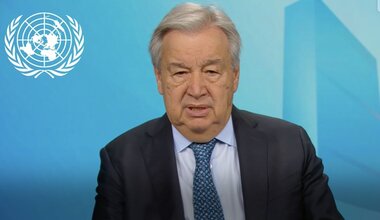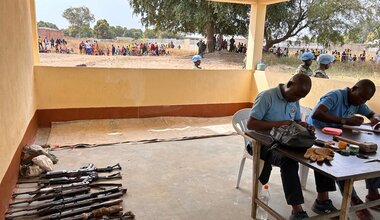Securing the city: on patrol with the Joint Task Force for Bangui
The convoy set off from Bangui’s 3rd district police station at 15:30 p.m., marking the start of the motorized patrol of 3 June 2020. At its head was the Central African National Gendarmerie. A United Nations Police (UNPOL) vehicle trailed closely behind. A mini tank of the MINUSCA Senegalese contingent followed at the tail of the procession. On the convoy’s itinerary: several neighborhoods of the district.
This kind of hybrid troop – consisting of military, police and gendarmerie units from the Central African defence and security forces and MINUSCA – is part of the Joint Task Force for Bangui (JTFB). Its mission is to ensure security in the country’s capital – whether it be by vehicle or foot patrol, through static guards or employing technological means such as drones to conduct surveillance of inaccessible areas.
Upon leaving the police station, the convoy initially crossed parts of the Kilometre 5 (PK5) district market, which was typically crowded at that time of day. Despite the amiable atmosphere, the whole procession appeared to be on alert. Something unexpected could occur at any time – requiring a prompt response.
The Joint Task Force for Bangui is a notable experiment in serving and responding to specific needs in United Nations peacekeeping missions. It is headed byBrigadier General Coulibaly Bamaro, a native of Côte d'Ivoire, who is assisted by two deputy commanders, one from the military and another from the police. At the heart of the JTFB’s operations is an ambitious, multifaceted agenda: protecting the civilian population in Bangui and its surroundings; safeguarding national institutions and high-ranking authorities; securing UN facilities and personnel against potential threats – all in support of the Central African Armed Forces (FACA) and the Internal Security Forces (FSI).
Next up on the patrol’s journey came a brief stopover on the outskirts of the PK5 neighbourhood, right in front of the Church of ‘Notre Dame de Fatima’ – which made headlines for the tragic events that took place there in 2014 and 2018. A group of young people called out in the Sango language. The Central African gendarmes, still at the head of the procession, returned their good-natured greetings. All this in a relaxed atmosphere, but all the while marked by undiminished vigilance. Motorized patrols seek to “create a climate of security and trust with the population,” according to General Coulibaly Bamaro.
The convoy made its way through the Sapaga market, thereafter, traversing the heart of the Fatima district to reach the Cattin neighbourhood, Kokoro 5 and Kokoro 1. The clock was about to strike 17:00 p.m. – time for a new stop near a lively crossroads. In a nearby corner, Central African music seeped through a baffle placed in front of a kiosk, while a few metres away consumers of kangoya (a local drink) vied to show off their dance steps. Some of them approached the convoy, expressed a few words of gratitude, and called for more patrols.
The talk of the town – the fight against the Covid-19 pandemic – has perhaps predictably impacted the work of the JTFB as it has other security components of MINUSCA. The task force is subject to movement restrictions and is obliged to review its declining troop strength.
Leaving the intersection about half an hour later, the patrol – currently a permanent fixture in the Central African capital by day and night – continued on its way to return to the 3rd arrondissement police station from which it had departed, having accomplished its mission as outlined by General Coulibaly Bamaro: “We aim to ensure freedom of movement of people and goods, prevent criminal acts and inter-community clashes and mark the presence of the United Nations among the population.”
 UN
UN United Nations Peacekeeping
United Nations Peacekeeping





